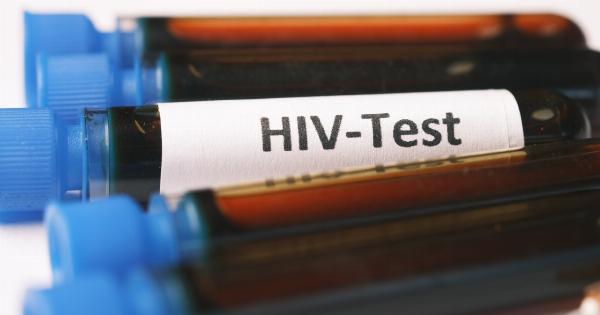Human Immunodeficiency Virus (HIV) has been a global health crisis for several decades. The virus weakens the immune system, making individuals susceptible to various infections and diseases.
Over the years, advancements in medical science have led to improved treatment options that have significantly boosted the survival rates of HIV-positive individuals. This article will explore some of the key breakthroughs in HIV treatment and their impact on survival rates.
The Evolution of HIV Treatment
Since the discovery of HIV in the early 1980s, the medical community has been actively researching and developing treatment options. In the early years, a diagnosis of HIV was often considered a death sentence, with limited treatment options available.
The first breakthrough came in the mid-1990s with the introduction of highly active antiretroviral therapy (HAART).
HAART is a combination of different antiretroviral drugs that work together to suppress the replication of the virus in the body. This treatment approach revolutionized HIV care by dramatically reducing viral loads and improving immune responses.
Individuals who adhered to HAART experienced a significant increase in their life expectancy.
Antiretroviral Therapy
Antiretroviral therapy (ART) is now the standard treatment for HIV-positive individuals. ART involves the use of a combination of antiretroviral drugs, often referred to as a drug cocktail.
The cocktail includes drugs from different classes such as nucleoside reverse transcriptase inhibitors (NRTIs), non-nucleoside reverse transcriptase inhibitors (NNRTIs), protease inhibitors (PIs), and integrase inhibitors.
Each class of drugs targets different stages of the HIV lifecycle, effectively reducing the viral load and allowing the immune system to recover. ART not only helps individuals live longer but also reduces the risk of transmission to others.
When taken consistently and correctly, ART can suppress the virus to undetectable levels, making the chances of transmission virtually zero.
Improved Drug Formulations
One significant advancement in HIV treatment is the development of improved drug formulations.
Initially, many antiretroviral drugs were available only in tablet or capsule form, which posed challenges for some individuals, especially children or those with swallowing difficulties. Today, there are options such as liquid formulations and dissolvable tablets, making it easier for individuals to take their medications.
Long-acting injectable formulations have also emerged as a game-changer in HIV treatment. These formulations offer the convenience of monthly or quarterly injections, eliminating the need for daily pill intake.
Long-acting injectables not only improve adherence but also provide a more discreet treatment option for individuals who may face stigma or privacy concerns.
Treatment as Prevention
The concept of “treatment as prevention” has had a profound impact on the HIV epidemic. Research has shown that individuals who are virally suppressed on ART are highly unlikely to transmit the virus to their sexual partners.
This finding has led to the development of strategies such as “Undetectable = Untransmittable” (U=U), which aims to educate and reduce the stigma associated with HIV.
By encouraging individuals to seek testing, start treatment early, and adhere to their medications, the U=U campaign not only improves individual health outcomes but also helps in controlling the spread of the virus.
The promotion of treatment as prevention has been instrumental in reducing new HIV infections globally.
Preventive Medications
In addition to treating HIV-positive individuals, there have been significant advancements in preventive medications for those at risk of contracting the virus.
Pre-exposure prophylaxis (PrEP) is a daily medication regimen that can effectively lower the risk of HIV infection in individuals who are HIV-negative but at high risk, such as sexual partners of HIV-positive individuals or individuals engaging in high-risk sexual behaviors.
PrEP usually consists of a combination of two antiretroviral drugs and has proven to be highly effective when taken consistently.
The availability and accessibility of PrEP have been vital in HIV prevention efforts, especially in key populations with higher risk profiles.
Co-Infections and Complications
HIV-positive individuals often face various co-infections and complications due to their compromised immune systems. However, advancements in treatment options have also tackled these challenges effectively.
For example, individuals co-infected with HIV and hepatitis C virus (HCV) now have access to highly effective direct-acting antiviral (DAA) drugs that can cure HCV in a matter of weeks.
Pneumocystis pneumonia (PCP), a severe lung infection associated with AIDS, can now be prevented through the use of prophylactic medications.
Similarly, treatment options for other opportunistic infections and HIV-related cancers have improved, enhancing the quality of life and overall survival rates among HIV-positive individuals.
Targeted Therapies
Another significant development in HIV treatment is the emergence of targeted therapies. These therapies aim to address specific challenges faced by individuals living with HIV, such as drug resistance or treatment side effects.
Targeted therapies are designed to provide alternative options when standard treatment regimens fail or are not well-tolerated by patients.
For instance, individuals who develop drug resistance can switch to second-line or third-line drug regimens that target different pathways of the virus. This allows for effective viral suppression despite resistance mutations.
Targeted therapies not only improve survival rates but also provide hope for those who have limited treatment options.
Access to Treatment
Despite the significant progress in HIV treatment, access to these life-saving medications remains a challenge in many parts of the world.
High costs, limited healthcare resources, and social barriers contribute to the disparities in access to HIV treatment and care. Ensuring universal access to treatment is crucial for achieving better survival rates and controlling the global HIV epidemic.
International collaborations and partnerships have played a vital role in improving access to treatment.
Initiatives such as the Global Fund to Fight AIDS, Tuberculosis, and Malaria have mobilized resources to support treatment programs in low-income countries. Generics and voluntary licensing agreements have also helped reduce the costs of medications, making them more affordable in resource-limited settings.
Conclusion
The improved treatment options available today have transformed the landscape of HIV care.
From the introduction of HAART to the development of long-acting injectables and preventive medications, these advancements have significantly boosted the survival rates of HIV-positive individuals. However, ensuring universal access to treatment and addressing social barriers remain pivotal in controlling the global HIV epidemic and achieving better health outcomes for all.


























